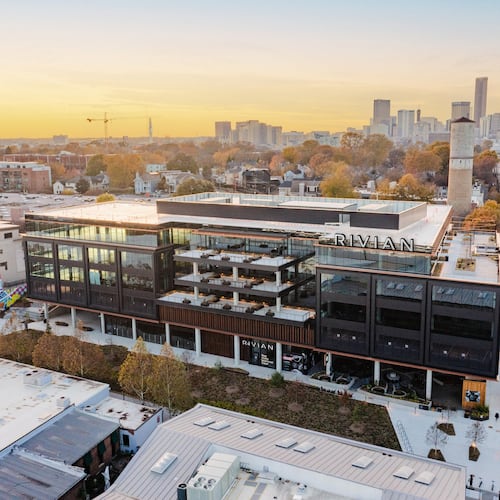Not since Rod Mullice opened his real estate development firm, Windsor Stevens Holdings in 2013, did he have a better year than 2020.
During the pandemic, he saw the occupancy and rental rates increase on two of his flagship properties and is close to breaking ground on two more apartment complexes on the Beltline and in downtown Chamblee.
“I had a great year,” said Mullice, the managing partner of Windsor Stevens Holdings. “And we have been able to attract interest from institutional-quality investors, including pension funds, from California, Illinois and New York who are interested in investing with diverse developers in urban cores.”
Mullice is a small part of Georgia’s larger claim as an economic powerhouse among racial and ethnic minorities — particularly Black residents, but also to a lesser degree Hispanics, Asian Americans and Native Americans.
Credit: Steve Schaefer
Credit: Steve Schaefer
Georgia’s Black buying power, defined as total income after taxes, was $118 billion in 2020, according to the 2021 Multicultural Economy report released last week by the University of Georgia’s Selig Center for Economic Growth.
That figure trailed only Texas ($149 billion) and New York ($141 billion), and was tied with California. It grew from $67 billion in 2010.
But it was only part of a greater story about diversity in spending amid major demographic shifts, even as wealth and income disparities persist.
Statewide, the number of Black Georgians increased by 13% over the past decade, while the white population dropped by 1%, according to 2020 U.S. Census data released Thursday. Meanwhile, Georgia’s Asian population jumped by 53% and its Hispanic population rose by 32%. The state narrowly remained majority white at just over 50%.
According to the UGA report, the combined U.S. buying power of African Americans, Asian Americans, Hispanics and Native Americans has gone from $458 billion in 1990 to $3 trillion in 2020. That figure is expected to reach $4 trillion in 2025, representing nearly 20% of the nation’s total buying power.
In Georgia, over the last 10 years, Black buying power increased 78%. That was the 19th-biggest increase among states, compared with 61% nationally.
Asian buying power here saw the 10th-fastest growth rate among states at 138%, compared with 111% nationally.
Hispanic buying power in Georgia grew 83%, 28th in the nation.
White Georgians’ buying power over the past decade saw a slower 52% increase, compared with 50% nationally, as white population growth stalled. White buying power in the state was $338 billion in 2020.
“That reflects a number of things,” said Jeff Humphreys, director of UGA’s Selig Center and author of the report. “The Georgia economy is doing well and that raises the buying power of every group. All the groups in Georgia have done well.”
But economic inequality among racial and ethnic groups has not gone away, even as minority populations grow faster. A 2019 survey by the Federal Reserve estimated the typical white family in the U.S. had eight times the wealth of the typical Black family and five times the wealth of the typical Hispanic family.
Several studies published in recent years found Atlanta to have the worst economic equality among major U.S. cities, with big differences between Black and white residents. Median income of white households is about three times that of Black households, according to the Atlanta Wealth Building Initiative.
Still, some see opportunity and progress.
Beyond shifting demographics, Georgia’s Black population has access to the highest concentration of Black colleges in the country at the Atlanta University Center, while nearby Georgia State University graduates more Black students annually than any college in the nation.
“So we are having rising levels of educational attainment for African Americans, who have been able to get jobs with higher salaries and start businesses at a faster grade,” Humphreys said. “If you start a business in Georgia, where the ground is fertile, you are likely to be successful.”
Credit: Steve Schaefer
Credit: Steve Schaefer
Mullice, who attended Morehouse College before graduating from Savannah State University, agrees.
Focusing on transit-oriented and walkable communities, when he opened The Pad on Harvard in 2017, it was the first market-rate apartment building built in College Park in more than 50 years. He has since sold it.
Temple Square, also in College Park, a majority Black neighborhood south of downtown Atlanta, opened during the pandemic and is fully leased.
“We are on really fertile ground here and that puts us in a really good position as a community,” Mullice said. “What I have witnessed over the last two years, is that Georgia has maintained its position as the (Black) Mecca, a cultural leader, a political leader and an economic leader.”
About the Author
Keep Reading
The Latest
Featured






